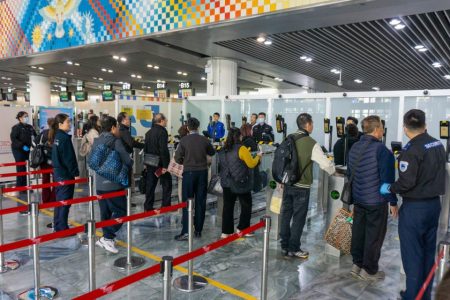The National Meteorological Administration (NMA) has unveiled a list of 16 national summer vacation routes that are intended to help domestic travellers escape the heat this summer.
Published on 30 June, the recommendations cover over 60 cities across 21 provinces, autonomous regions and municipalities.
Featured on the list are 11 northern Chinese destinations that are traditionally known for being ideal places for staying cool in the summer. They include Heilongjiang, Jilin, Liaoning, Inner Mongolia, Xinjiang, Beijing, Hebei, Shanxi, Shaanxi, Gansu and Shandong.
Southern Chinese provinces and the four main plateaus have not been left out, as the NMA has also suggested destinations such as Qinghai, Tibet, Sichuan, Hubei, Hunan, Fujian, Guizhou, Yunnan and Guangxi.
Each of the 16 routes have been assigned a Chinese name that reflects their unique local offerings. For instance, the name for the Inner Mongolia route can be translated as “Grass Skyline: Passing through the Northern Frontier” (草原天路。北疆穿行), while the Jilin route’s English name can be rendered as “Secret to Staying Cool at 22°C: Bewitching Jilin (22°清凉密码。醉美吉林).
[See more: Intensifying weather system may lead to typhoon signal, say Macao forecasters]
A wide range of destinations have been selected for each route. The Liaoning itinerary, for example, features Wolong Lake in Shenyang, Binglashan National Forest Park in Tieling, Qingyuan Red River Valley National Forest Park in Fushun, Guanmenshan National Forest Park in Benxi, the Dandong Hutanggou scenic area in Dandong and the Qingliangshan scenic area in Anshan.
Zhu Ling of the Liaoning Meteorological Bureau said that most of these attractions are located in the mountainous areas of the Liaodong Peninsula, which are 60 percent covered with forests, making them an important scenic area for beating the heat in Liaoning.
In formulating the list, China’s forecaster said it used objective scientific methodologies and assessment techniques, and considered the strengths and coolcation offerings of each place.
According to Li Xiucang, the deputy head of the National Meteorological Centre’s climate services office, the country’s meteorologists analysed the location’s average temperature in summer, the number of days that a person can remain in thermal comfort, the number of humid days and the number of windy days, among other factors.
The convenience of transport, the needs of tourists and the balanced distribution of the area’s offerings were also considered.






